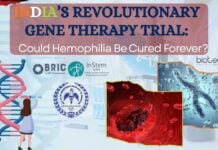Genetics Throws Light On Early “Vampires” (Pun Intended)
Vampires have always been, and always will be a rage. These things somehow seem to ooze cool. Okay let’s see what we know about them- A vampire is an undead spirit cursed to walk the Earth feasting on the blood of others by night as an eternally young, attractive douchebag. They sleep during the day, often in coffins, and awaken at night to feed and go to parties. Oh yeah, they also have super sharp teeth to help when they are super hungry and go into a biting frenzy.
*Frowning uncontrollably*
Okay, but if you look closely at the origins of these tales, it all started in Eastern Europe with Prince Vlad “The Impaler” Dracula. According to the lore, Dracula was a ruthless ruler who impaled his enemies on large wooden stakes and drank their blood and ate their flesh. He was not well liked by the people, surprise surprise! And so these folklores began to spread like wildfire and have now reached an intolerable state. Especially, the author who invented and incorporated vampires into fiction thought it would be amusing and it would be fun. NOT.
But now, a new study
by scientists at the Boston Children’s Hospital suggests that these mythical baddies could actually have been suffering from a rare blood disorder.Fortunately there wouldn’t be any Edwards, Spikes, or Bills without Europe’s original 19th-century vampire folklore, which the Proceedings of the National Academy of Sciences study reports emerged because of a mysterious, real-life illness that makes people extremely pale and allergic to the sun.
In the study, a team of scientists identify the illness as erythropoietic protoporphyria (EEP), a type of blood disorder that affects the body’s ability to create heme, which allows hemoglobin to bind the iron that makes it red.
People with EEP are chronically anemic, typically very pale, and have skin that’s so sensitive that extended time in the sunshine can cause blistering and disfiguration.
Today, erythropoietic protoporphyria (EPP) remains rare but is better understood as a genetic mutation that affects oxygen in the blood and makes sufferers allergic to the sun. Centuries ago, however, it is understandable that people may have seen people with EPP as supernatural, given the lack of scientific understanding. While this is not the first time vampires have been linked to EPP, it is believed to be the most comprehensive analysis connecting the two.
Porphyrias, a group of eight known blood disorders, affect the body’s molecular machinery for making heme, which is a component of the oxygen-transporting protein, hemoglobin. When heme binds with iron, it gives blood its hallmark red color. The different genetic variations that affect heme production give rise to different clinical presentations of porphyria – including one form that may be responsible for vampire folklore.
Erythropoietic protoporphyria (EPP), the most common kind of porphyria to occur in childhood, causes people’s skin to become very sensitive to light. Prolonged exposure to sunshine can cause painful, disfiguring blisters.
Staying indoors during the day and receiving blood transfusions containing sufficient heme levels can help alleviate some of the disorder’s symptoms. In ancient times, drinking animal blood and emerging only at night may have achieved a similar effect — adding further fuel to the legend of vampires.
“This newly-discovered mutation really highlights the complex genetic network that underpins heme metabolism,” says Barry Paw MD, PhD, of the Dana-Farber/Boston Children’s Cancer and Blood Disorders Center, who was co-senior author on the study. “Loss-of-function mutations in any number of genes that are part of this network can result in devastating, disfiguring disorders.”
Luckily, the condition is very rare: It occurs in about 1 of every 74,3000 individuals and about 300 cases have been reported in medical literature. The onset of EPP can happen anywhere between infancy and adulthood.
Paw suggests that identifying the various gene mutations that contribute to porphyria could pave the way for future therapies that could correct the faulty genes responsible for these related disorders. “Although vampires aren’t real, there is a real need for innovative therapies to improve the lives of people with porphyrias,” concludes Paw.


























